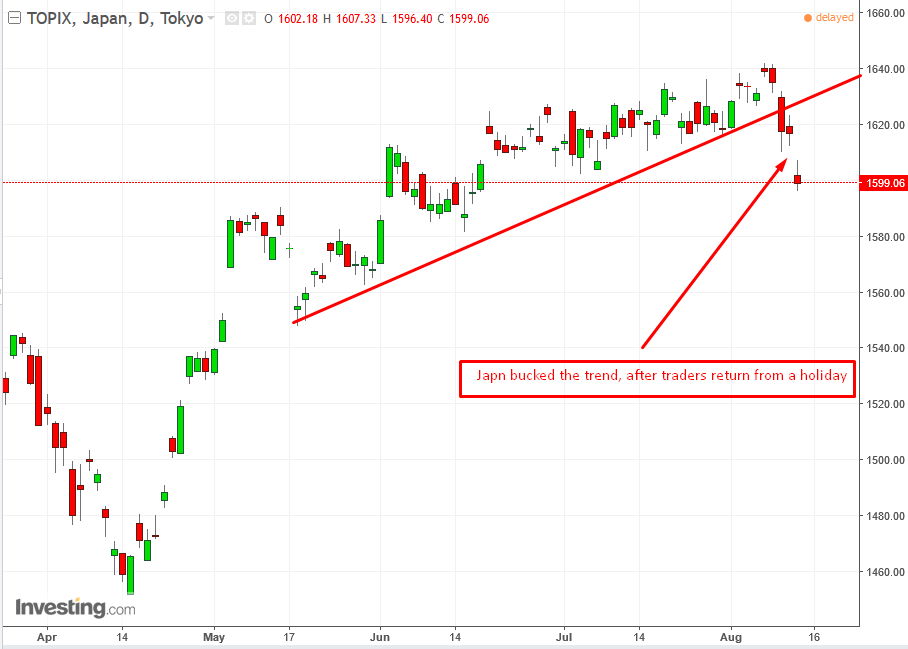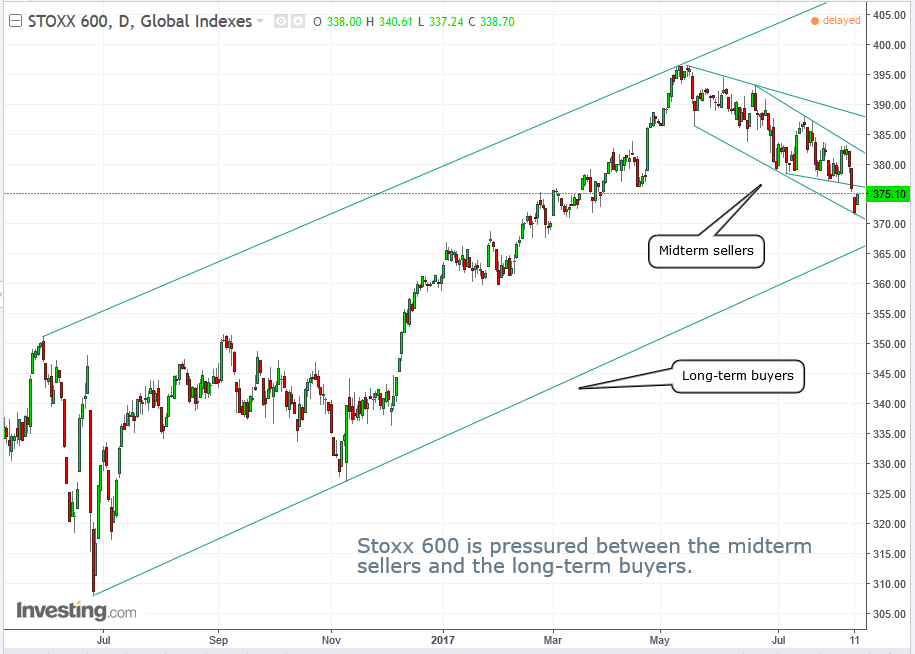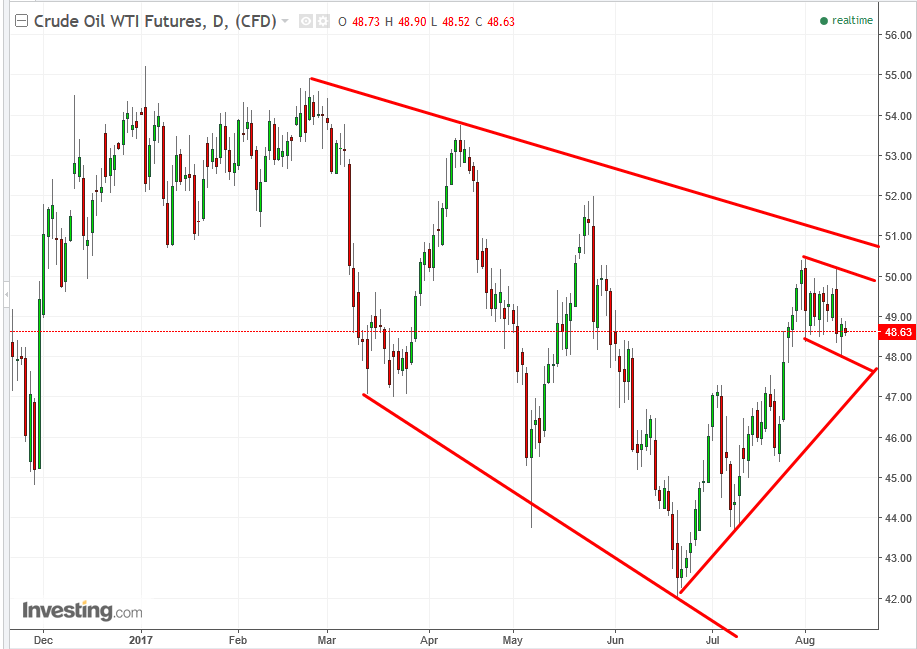by Pinchas Cohen
Global Affairs

As tensions between the US and North Korea abate, indices in Asia and Europe climbed higher while gold, the yen and Treasuries declined.
Today was the first day of growth in European markets after three days of major declines, in which the STOXX 600's lost 2.75 percent, its fastest decline this year. The rise in Europe equities follows the uptick in Pacific Asian markets, including North Korea's immediate neighbor—South Korea.

On the other hand, not all Asian market rose as the Japanese TOPIX dropped 1.10 percent after traders returned from a holiday.
While last week’s S&P 500 decline of 1.3 percent, its biggest year-to-date, is normal during short term volatility within a rising trend, it broke the extreme calm currently pervading the market and in turn, volatility gauges soared. The drop followed the rising tensions between the US and North Korea, after global equities registered record highs on the outlook of a global recovery and tightening US monetary policy. Investors consider the recent political risk to be only temporary and the market narrative assumes markets will resume higher to new records. However, the latest reading on core prices disappointed expectations, making it even tougher for the Fed to remain on its path toward increasing interest rates.
In Asia, Japanese second-quarter growth beat the 0.6-percent estimates with a full 1-percent in the last quarter. This is the country's sixth straight quarter of growth in its longest expansion in 11 years. The higher numbers are powered by what the developed world has been relying upon—consumer spending.
While China retook its role as the leader of global growth, after losing it in Q1 2017 to Europe, its economy has cooled down upon entering the second-half. Curbs on property, excess borrowing and industrial overcapacity began to show. Industrial output missed 7.2 percent year-on-year estimates in July and 7.6 percent MoM from July with just 6.4 percent. Retail sales missed the 10.8 estimate, with just a 10.4 percent year-over-year growth, and fixed asset investments in urban areas advanced just 8.3 percent, disappointing the 8.6 percent year-over-year projection.
Market Moves
Stocks

- The STOXX Europe 600 Index soared 0.7 percent as of 8:15 a.m. in London (3:15 EDT).
- The MSCI All-Country World Index increased 0.2 percent, its first advance in a week on a closing basis.
- The UK's FTSE 100 climbed 0.3 percent, its largest increase in more than a week.
- Germany’s DAX rose 0.9 percent, its biggest rise in more than a week.
- S&P 500 Futures jumped 0.5 percent, its largest climb in almost four weeks.
Currencies
- The euro gained less than 0.05 percent to $1.1825, its strongest in more than a week.
- The Dollar Index rose 0.2 percent, its largest advance since Tuesday.
- The British pound dipped less than 0.05 percent to $1.3012.
- The South African rand climbed 0.8 percent to 13.3671 per dollar, its first advance in a week.
Bonds
- The yield on 10-year Treasuries increased two basis points to 2.21 percent.
- German 10-year yields rose three basis points to 0.41 percent.
- Britain’s 10-year yield gained two basis points to 1.062 percent.
Commodities

- West Texas Intermediate crude increased 0.1 percent to $48.86 a barrel, as it struggles within a consolidation at the top of the midterm uptrend line since June 21, and the long-term downtrend line since February 23.
- Gold decreased for the first time in a week by 0.2 percent to $1,286.54 an ounce, upon reaching the potential triple-top resistance, which is made up by its previous two peaks in April and June.
